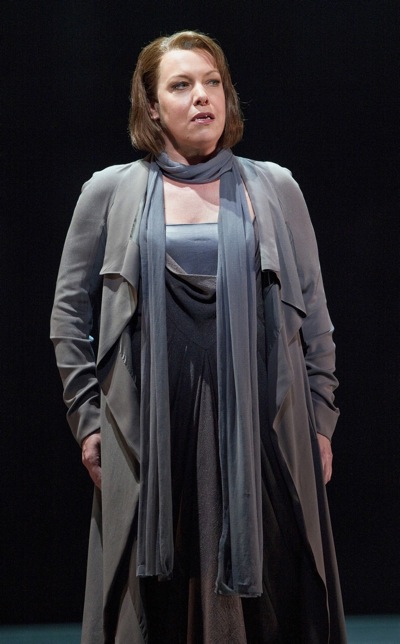
The End of a World
The final curtain came down on Götterdämmerung, the closing opera in San Francisco Opera’s production of Wagner’s The Ring of the Nibelung, and moments later the curtain lifted to reveal soprano Nina Stemme alone on stage. Across the audience, where not a single empty seat was in immediate view, everyone, it seemed, rose to applaud and yell “brava” to this wonderful singer, whose rich vocal color, unwavering energy, and powerful commitment in her portrayal of the Valkyrie Brünnhilde were at the emotional heart of this final performance.
Next in the list of crucial and brilliant performances was that of the orchestra and Maestro Donald Runnicles, who kept this complex and gorgeous music dynamically measured and subtly realized.
And without stinting in support were the brilliant singers, chorus and production crew that made this production move near flawlessly as an outstanding operatic and dramatic piece.
Götterdämmerung ends the 17-hour epic that Wagner began writing in 1848 and completed in 1874. A mélange of myth, politics and social commentary, the Ring Cycle’s long development contributes to its often unwieldy movement and gnomic ideas. Its music, however, complex and often rapturous, held together by leitmotifs and sheer genius, synthesizes the cycle’s ideas and lofts them past the simplicities of allegory, fairy tale and even local history into a realm where the dilemmas of ethics and morals, impulses and cravings collide in the imagination. Watching—or perhaps, it’s better described as feeling—the Ring Cycle is a deeply human experience. We recognize the confusions of these large, heroic characters. We become involved.
And the beat goes on
San Francisco Opera’s Götterdämmerung opens among crossed wires and spasmodic electronic images. Here the Norns, the weavers of Fate, braid the future—ironically using a technological vocabulary of massive cables. When the cables snap, the imminent death of the gods is assured.
In the more domestic following scene, Brünnhilde urges Siegfried to leave her and seek his destiny as a hero. This separation, like the snapping of the Norn’s cables, leads to Siegfried’s infidelity and Brünnhilde’s revenge.
Siegfried’s betrayal is part of a Nibelung plot to regain the ring forged from the Rhine River’s gold. The plot is engendered in the comfortable, ethically louche world of the Gibichungs, a bourgeois warrior society. Through the use of a magic potion, Gunther, the leader of the Gibichungs, in concert with the Nibelung Hagen, makes Siegfried fall in love with his sister Gutrune. Siegfried not only forgets Brünnhilde, he disguises himself as Gunther in order to force the Valkyrie into marriage with Gunther.
Betrayal upon betrayal, it is only with Siegfried’s murder and Brünnhilde’s immolation on his funeral pyre that the decaying world will be set aright, and the power-laced gold of the river returned to the Rhinemaidens that guard and preserve it.
Wagner began the Ring Cycle as a criticism of his own world and its materialistic concerns. It was his critique, among other political ideas, of the German bourgeoisie. San Francisco Opera and Director Francesca Zambello strike a similar political note in their American cycle. The world of the dying gods is represented by landscapes of oil refineries, TV monitors flooded with electronic snow, black-garbed soldiers with machine guns, trash dumps of black plastic bags spilling empty plastic bottles: a dark portrait of our own culture. Even so, as the production proceeds the drama moves further and further from the specific and into the metaphysical—a realm of real and filmic fire and water, in which the Rhine gold morphs into a thin gold fabric and hope for the future is symbolized by the planting of a young tree.
Perhaps our world, too, will engender such possibility within its current darkness and chaos.
—Jaime Robles
Photo: Nina Stemme in the San Francisco Opera production of Wagner’s Götterdämmerung. Photo by Cory Weaver.
